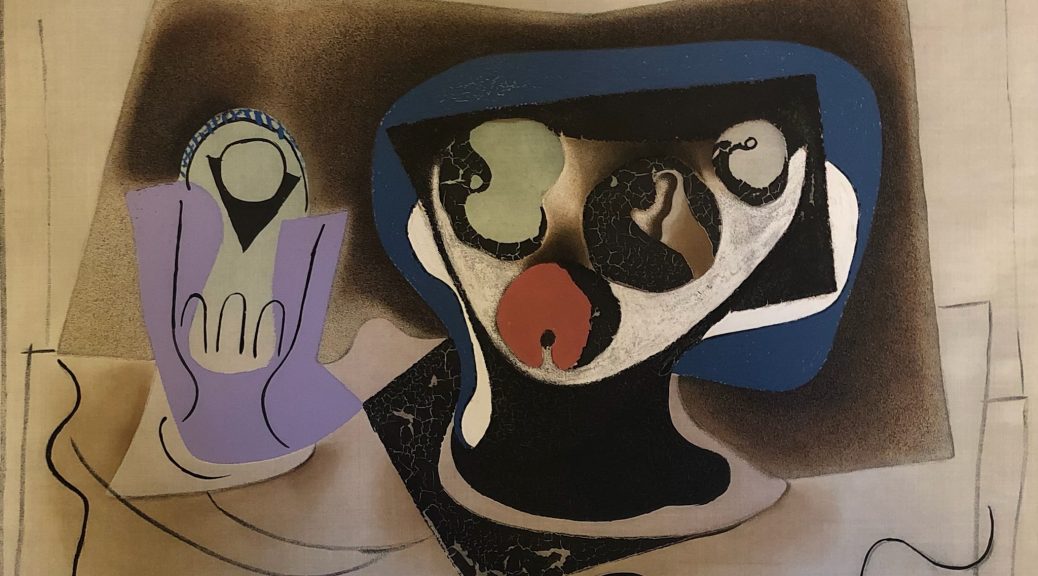0322-1
Pablo Picasso
(after)
Le verre d’absinthe (1972)
Etching and aquatinte
Signed Picasso in pencil
84 x 63 cm
Ed. HC/300
Printed and published by Atelier Crommelynk, Paris, with their blindstamp
Pablo Picasso ranks among the most significant artists in Western art history, and his extraordinarily wide-ranging body of work definitively shaped the course of modern art, influencing virtually every artist or movement that followed. Born in Spain in 1881, Picasso was the son of an academic painter and studied art in Barcelona, where the city’s fin-de-siecle avant-garde was an early influence. In 1904, he settled permanently in Paris, where he would remain for the majority of his life, and became part of the artistic milieu of the bohemian Bateau-Lavoir district. There he met poets such as Guillaume Apollinaire and Max Jacob, who became early commentators on and champions of his work.
Picasso’s work moved through several distinctive phases, though certain themes remained constant throughout his entire oeuvre. His early “Blue Period” of 1901 to 1904, named for the somber palette of the canvases, explores themes of poverty, loneliness, and despair, a response to the suicide of his friend Casagemas, with whom he had first traveled to Paris. After establishing himself in France, he turned his attention to the city’s itinerant performers, often depicting clowns and harlequins in the works of his “Rose Period.”
A formative influence on Picasso was the works he was exposed to at the notorious evening salons hosted by the adventurous art patrons Gertrude and Leo Stein, notably Fauvist works by Henri Matisse, as well as the art and artifacts of Africa and Oceania, which were avidly collected by avant-garde artists at the turn of the century. Picasso’s 1906 portrait of Gertrude Stein, in which her facial features appear to be modeled after an Iberian mask, reflects the artist’s early stylistic experiments with so-called “primitivism,” which came to full fruition in his masterpiece Les Demoiselles d’Avignon (1907). In Les Demoiselles, jagged figures adopt classically-derived poses, with African and Iberian masks in lieu of heads. The fragmented planes and sharp angles of the painting are often considered the artist’s first foray into a proto-Cubist mode.
The Cubist style for which Picasso is perhaps best known was developed by the artist in close dialogue with Georges Braque; indeed, during the early years of Cubism, the two artists’ styles were so similar that it can be difficult to distinguish the work of one from the other. These Cubist works are typically divided into two distinct phases: the first, Analytic Cubism (1910-12), is characterized by a radically simplified vocabulary of lines and planes in a near-monochrome palette of browns, ochres, and grays, while the second, Synthetic Cubism (1912-14), is marked by the incorporation of collaged elements, such as scraps of paper, bottle labels, and newsprint.
Following World War I, Picasso’s work turned away from Cubism towards an exploration of a classicizing mode, and his work of the interwar years often explores mythological subjects such as minotaurs, centaurs, and satyrs, as well as sculptural figures clad in togas. His work of the late 1920s also reflects the influence of Surrealism, with depictions of ambiguous, anthropomorphic objects and grotesquely distorted figures.
The outbreak of the Spanish Civil War in the late 1930s had a dramatic effect upon Picasso, resulting in one of the most significant works of his career, the massive, mural-like tableau Guernica (1937), which memorializes the bombing of a Spanish town. He evokes the horrors of war and attendant human suffering in a chaotic arrangement of fragmented planes, recalling his earlier Cubist works, alongside writhing figures, disembodied heads, and braying horses. The work was first displayed at the Spanish Pavilion at the 1937 Exposition Universelle in Paris and was sent on an international tour to raise funds and awareness about the Spanish plight.
In the postwar years, up until the very end of his life, Picasso continued to experiment in multiple mediums, including ceramics, sculpture, and printmaking. The last two decades of his life were among his most prolific, and his work of this period often exhibits a sense of freedom of expression, coloristic ingenuity, and stylistic diversity, often returning not only to themes he had explored earlier in his career, but also the work of the Old Masters.
Request price for Pablo Picasso


